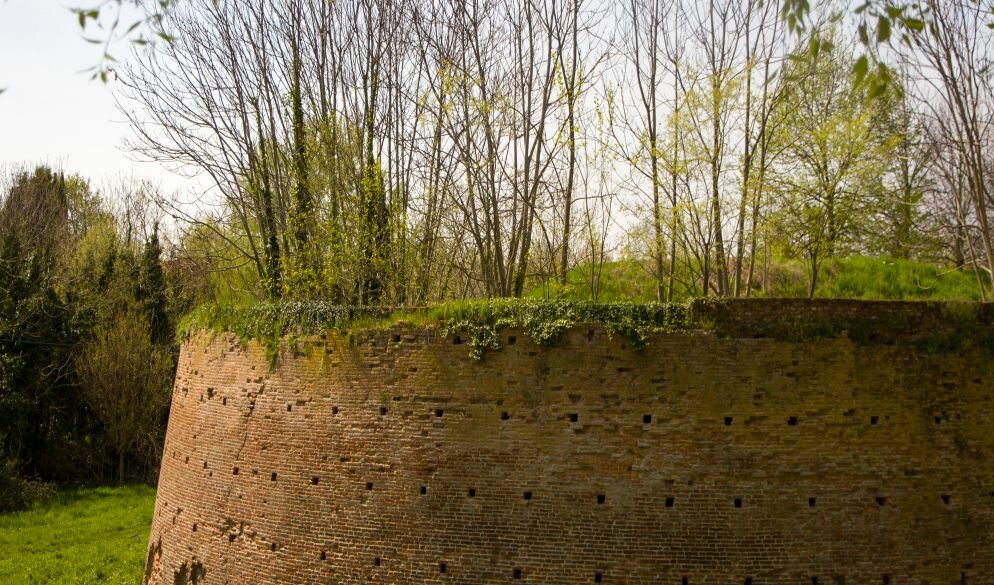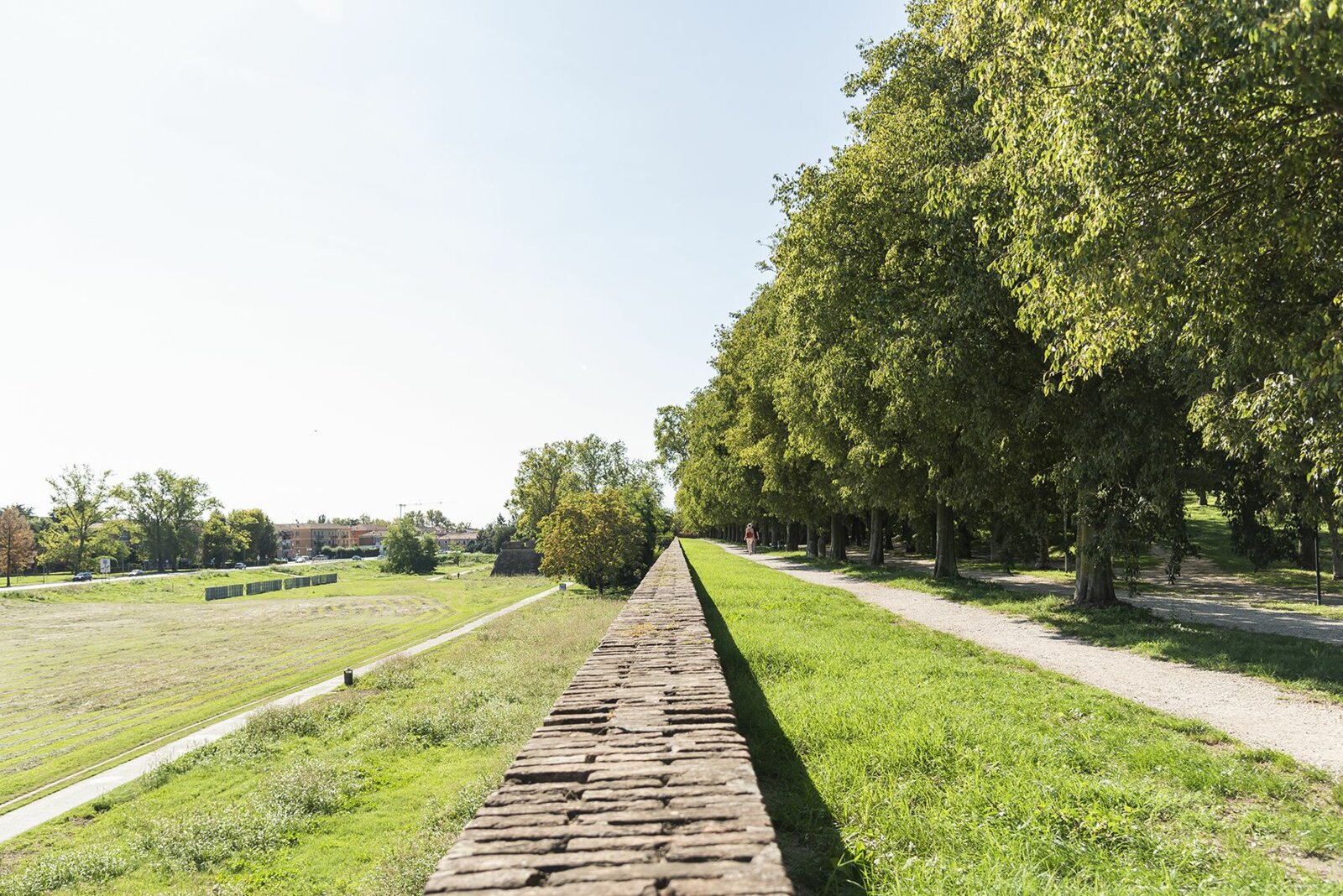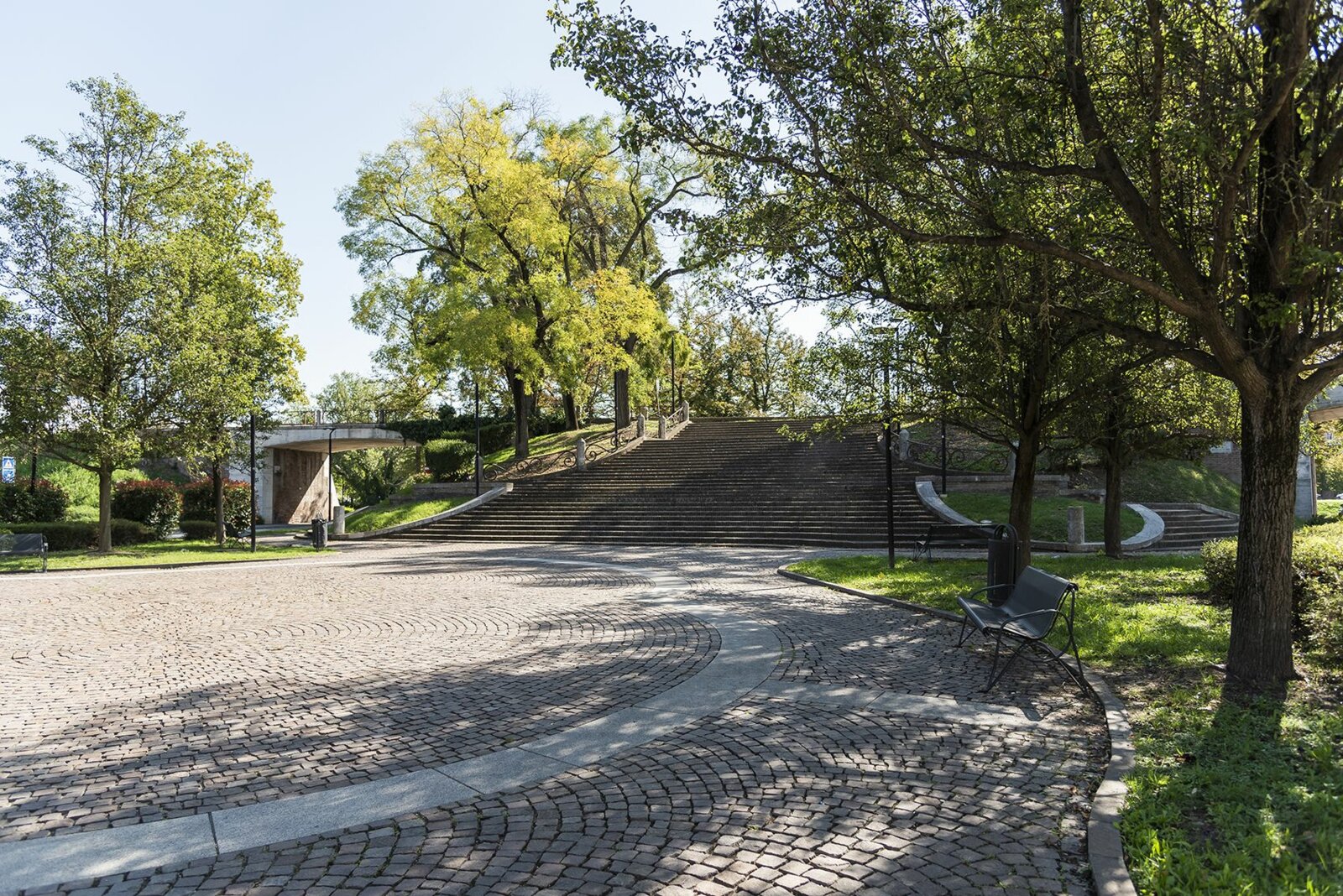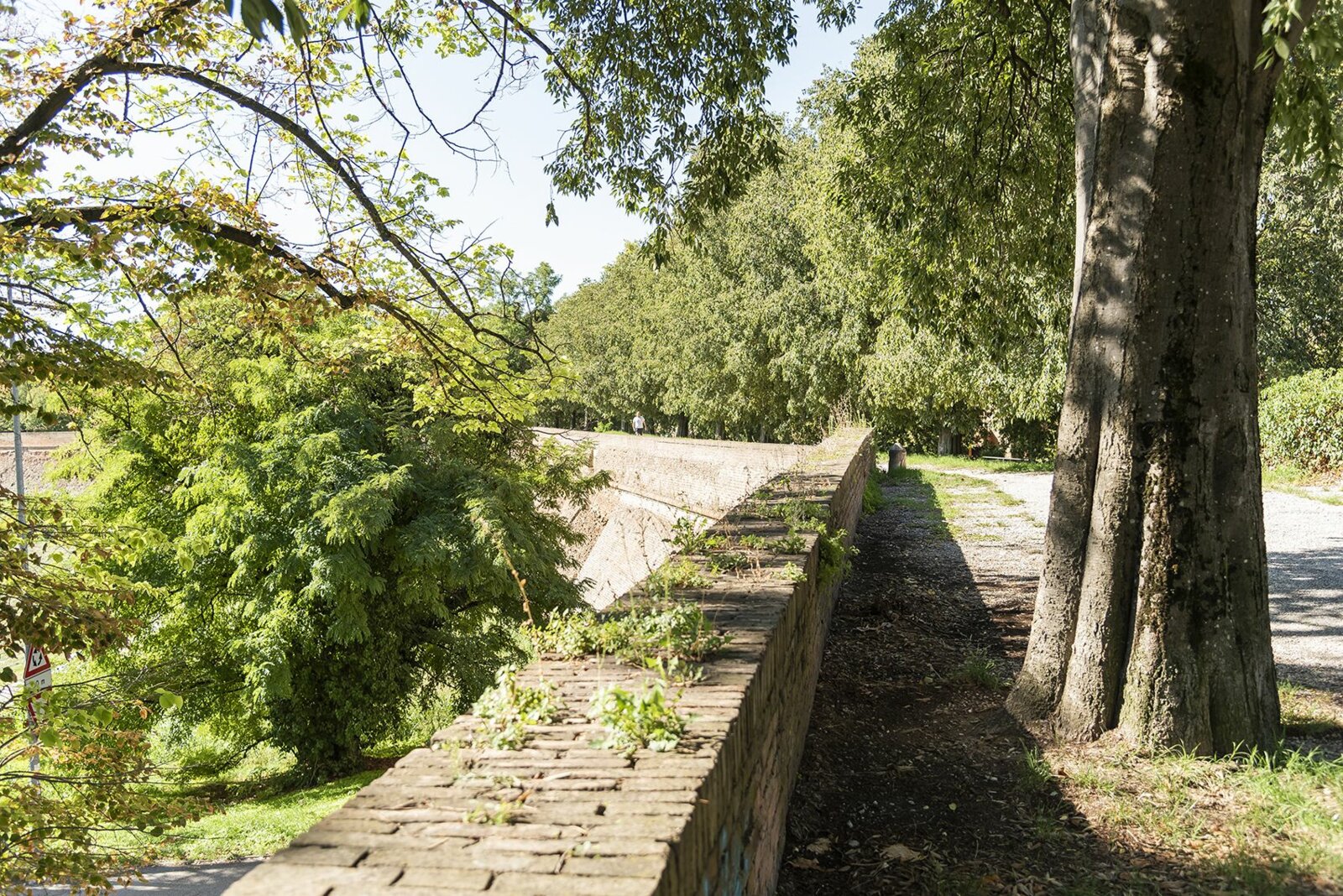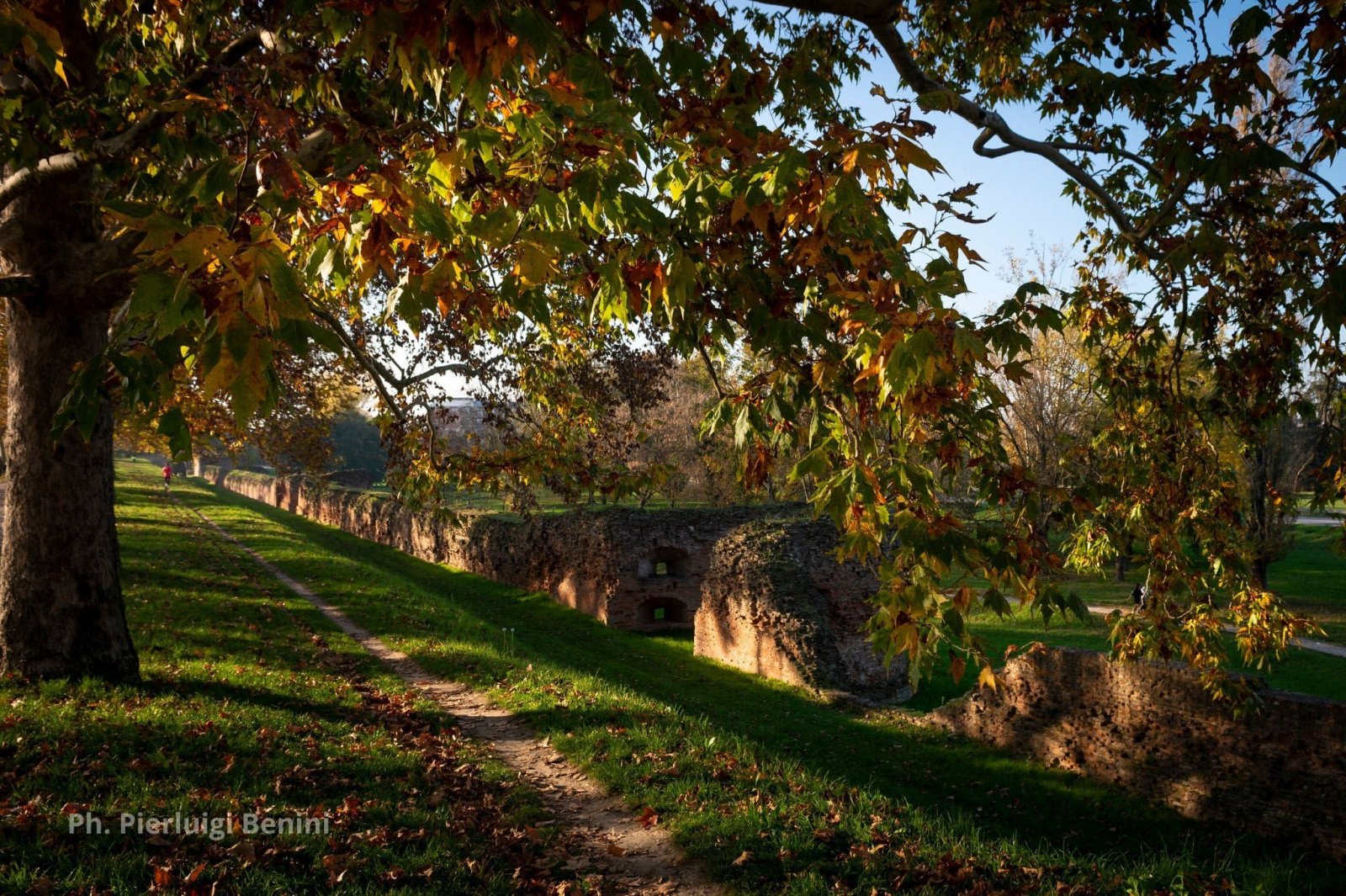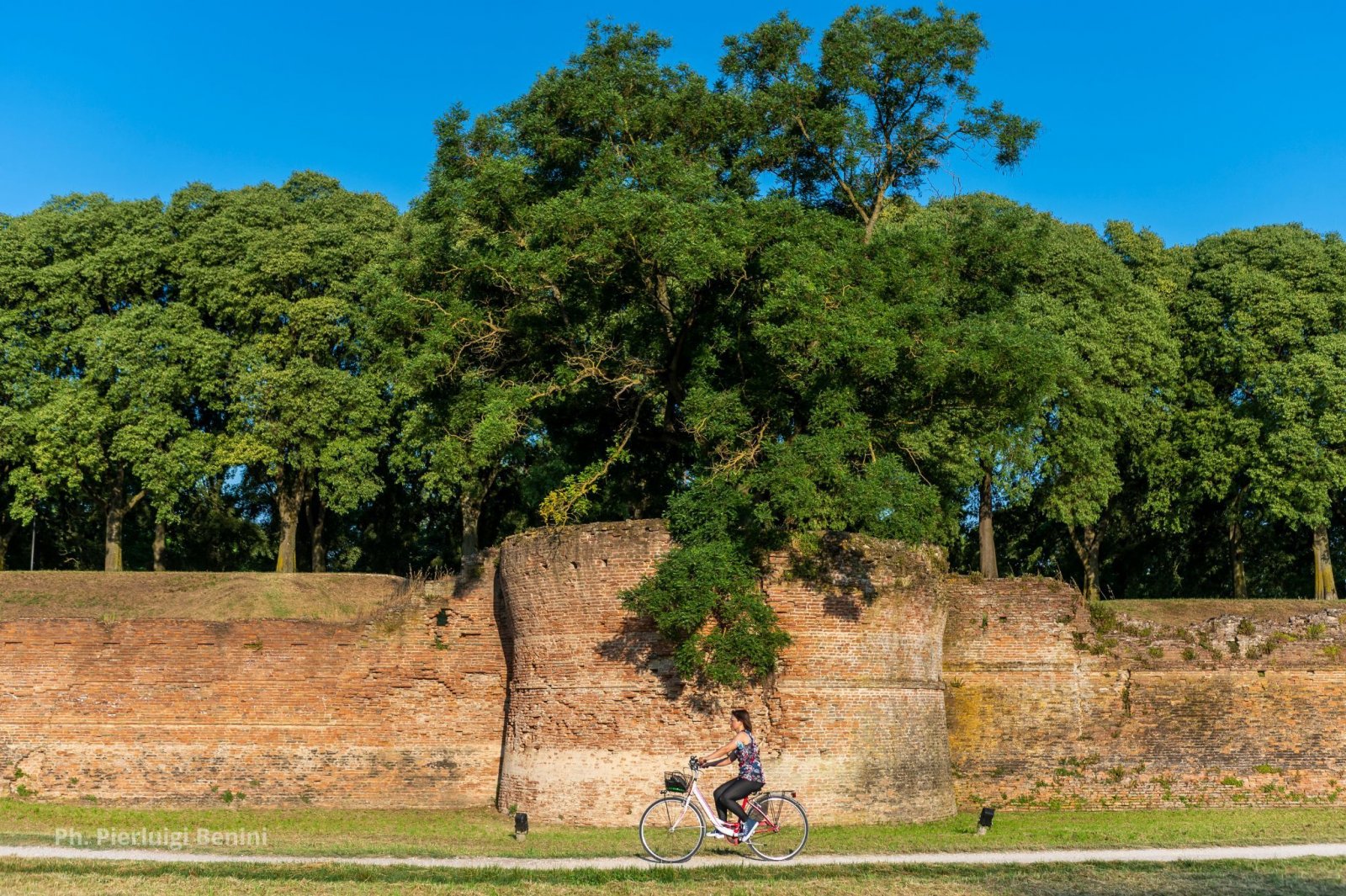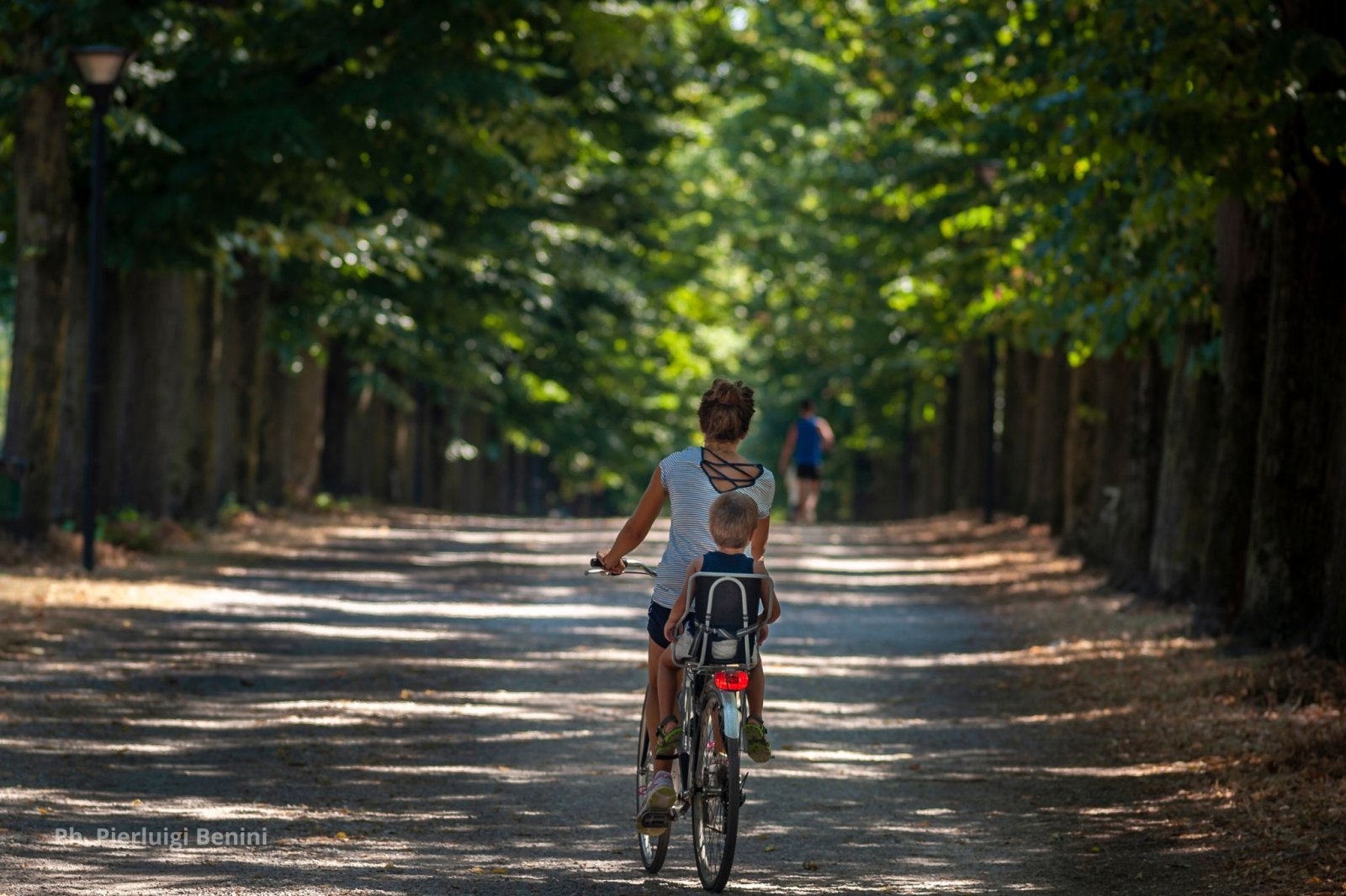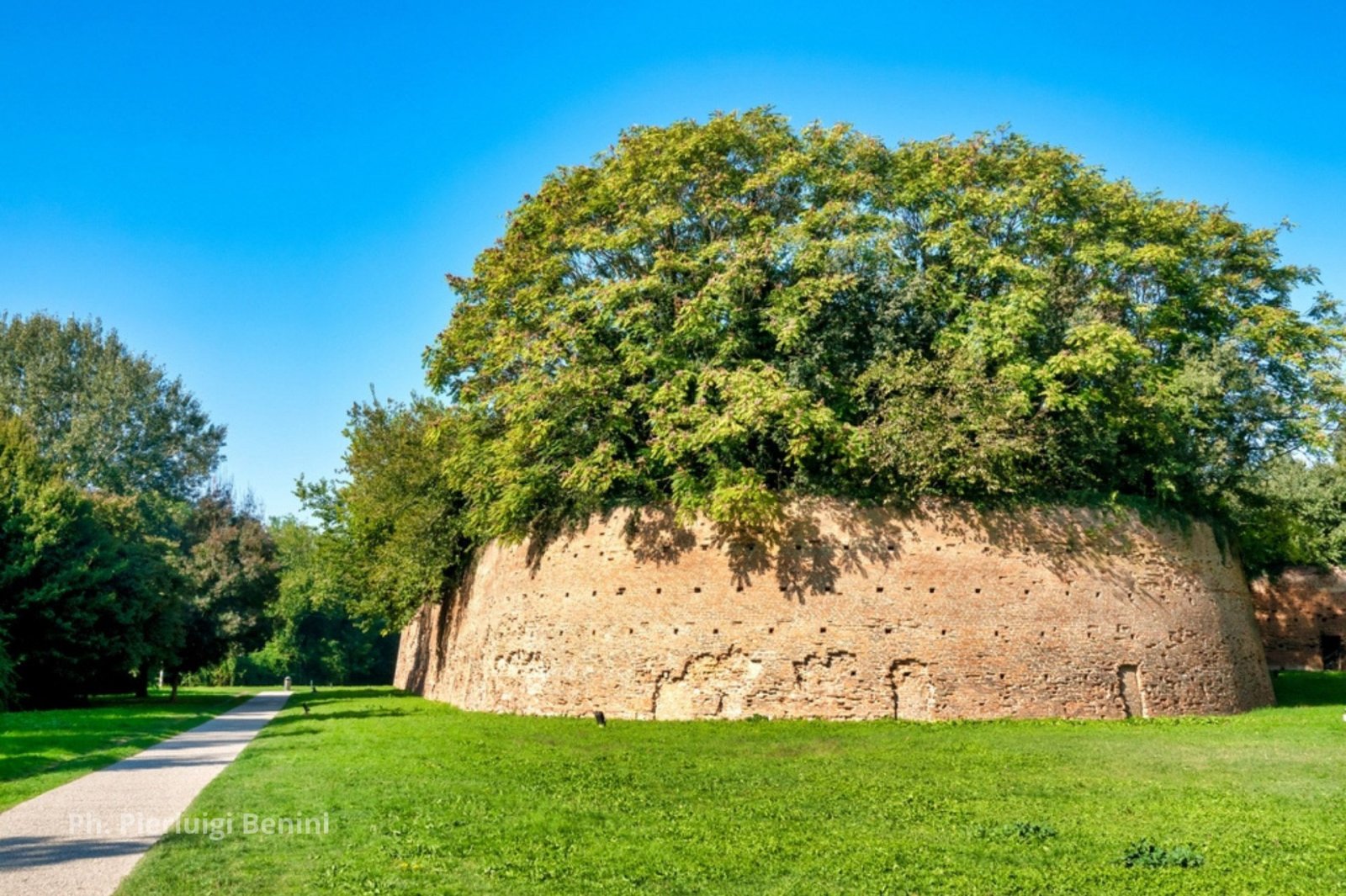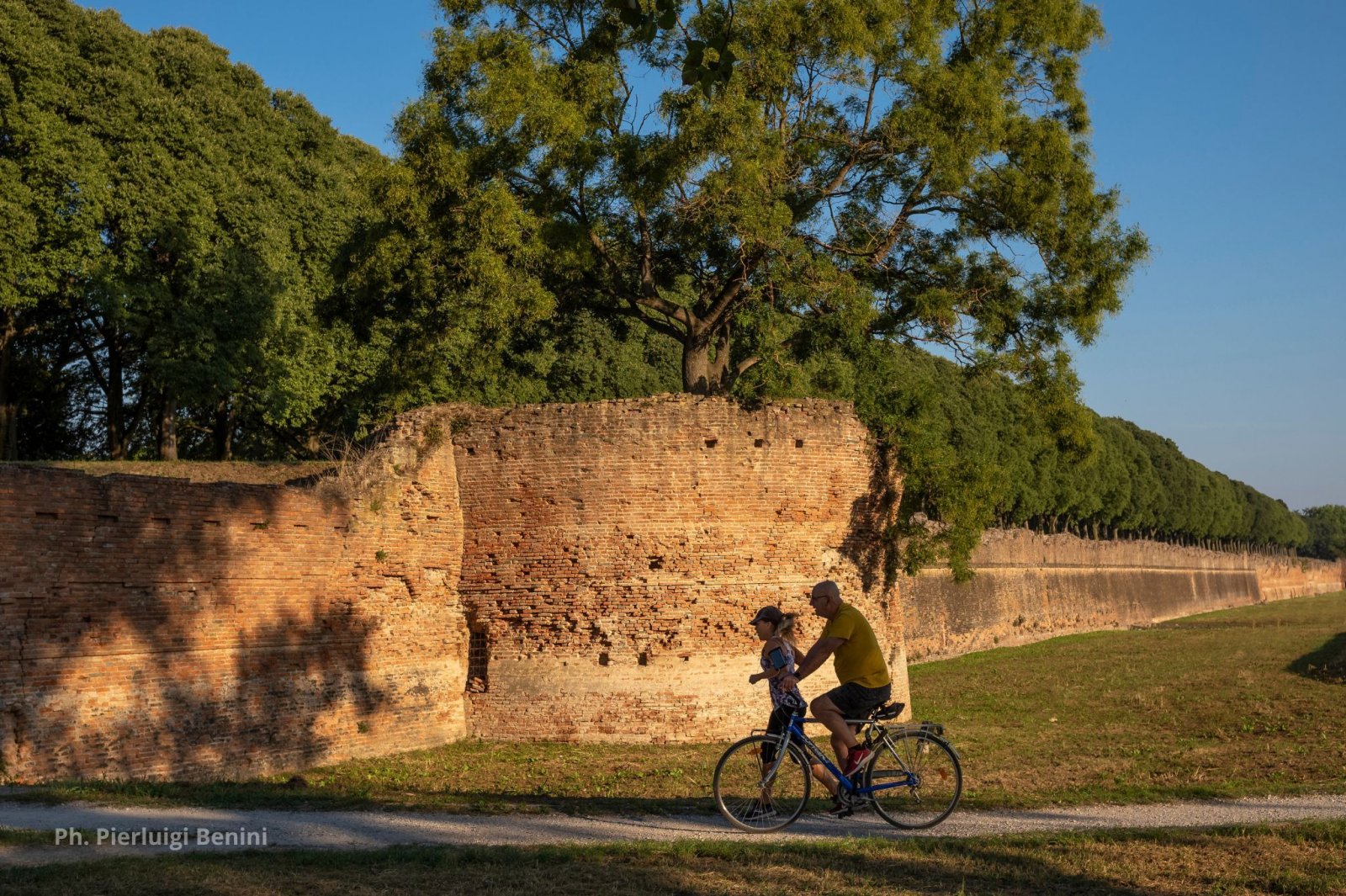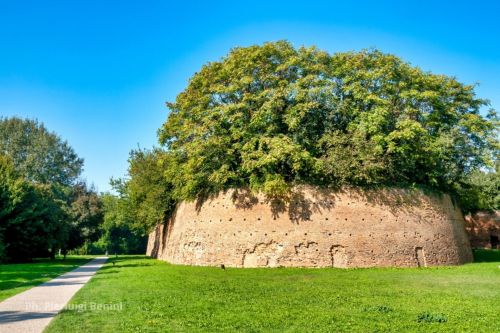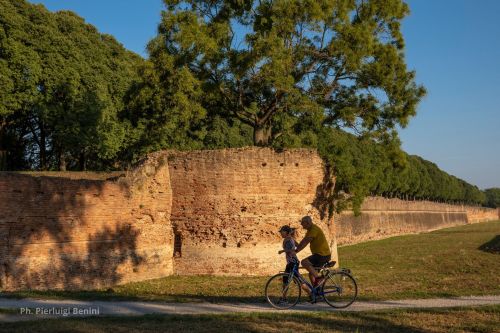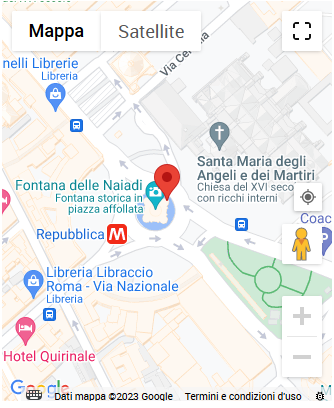Potrebbe interessarti anche

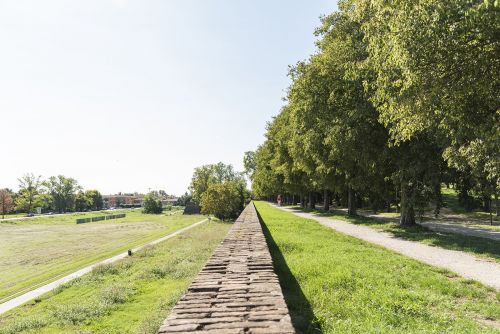
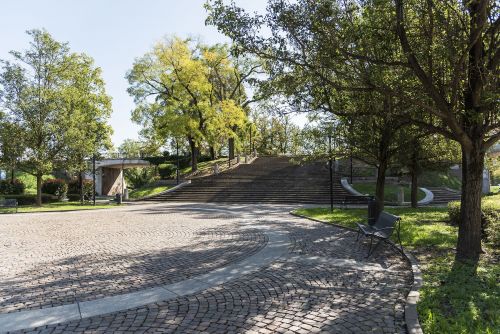
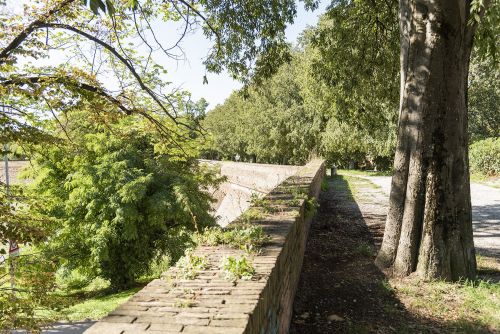
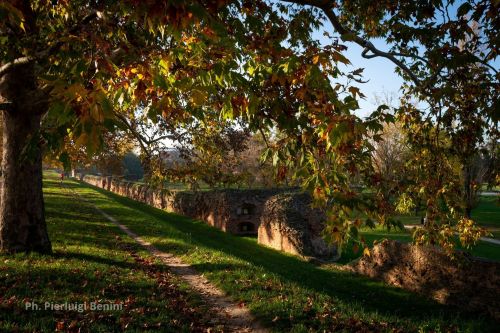
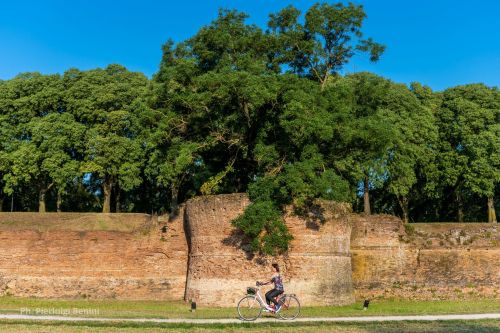
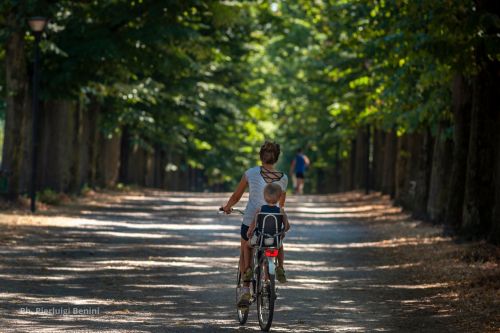
Ferrara City Walls
As many as nine kilometres of walls embrace Ferrara almost completely – one of the most complete and varied circuits in our country. A ring that excellently represents the most significant periods of Italian military architecture, today immersed in green barriers and a rampart.
Studied and admired even by the great Michelangelo, the imposing city walls bear witness to Ferrara's important past and are today a perfect meeting place for relaxing walks or outdoor sports.
How about a different way to discover the history of the Walls of Ferrara, from its origins to the most recent restoration? Discover the Mura Aperte project and have a cutting-edge experience using augmented reality.
Ferrara City Walls - Historical Notes
The walls of Ferrara have a long and winding history. They were built in several stages: the northern section was largely built between 1493 and 1505 as part of the construction of the Addizione Erculea, a project by Biagio Rossetti while the eastern section was commissioned by Alfonso I d'Este, between 1512 and 1518.
The southernmost tip of the city wall is home to Porta Paola, now Information Center about the city walls, designed by Giovan Battista Aleotti and built in 1612 after the passage of Ferrara to the Papal States. From the opulent gate, the stretch of wall leading westwards is the one that has undergone the most significant transformations. Following the tree-lined path, one encounters two bastions that were part of a grandiose pentagonal fortress – no longer in existence today – commissioned by the papal administration.
In the 19th century, the walls lost their military function to become a simple customs enclosure. A sudden degradation, due to lack of maintenance and improper use of the space, allowed nature to regain its space and so the walls were soon obscured by wild vegetation. The great wars of the early 20th century worsened the damage to the walls as did some urban “modernizing” interventions.
As early as the 1950s, the likes of Bruno Zevi and Giorgio Bassani spoke out in favour of the restoration and preservation of the precious walls. However, we have to wait until the 1970s, for the first real interventions to enhance the historical structure, carried out after a series of studies and in-depth investigations. The goal was to connect the area of the Barco district and the Po River to the city through green and well-maintained spaces, pleasing the citizens with the so-called Green Addition, on the imprint of the Addizione Erculea that had previously intervened in urban planning. Thus, at the end of 1987, the great municipal project “for the restoration, recovery and enhancement of the Walls and the cultural-museum system of the city” was launched, led by Romeo Ballardini. The Walls Project is even today considered the centrepiece of the city's contemporary urban redefinition. Also part of the project was the redevelopment of the external area adjacent to the city walls, what today Ferrara residents call il sottomura: a pathway that exceeds the length of the walls by one kilometre. Illuminated and maintained, it is today the accomplice of the toughest sports workouts as well as the most relaxing and refreshing walk in the city.
You may not know about...
A SMALL EXOTIC PARADISE. In ancient times, the path of the fortification hid a small exotic paradise. Well-cared for by the Estense family, this garden was placed next to a hunting reserve that today is called Bagni Ducali, at the foot of the highest “mountain” of the city, the Montagnone. Today, various cultural and recreational events are held in this green area throughout the year.

